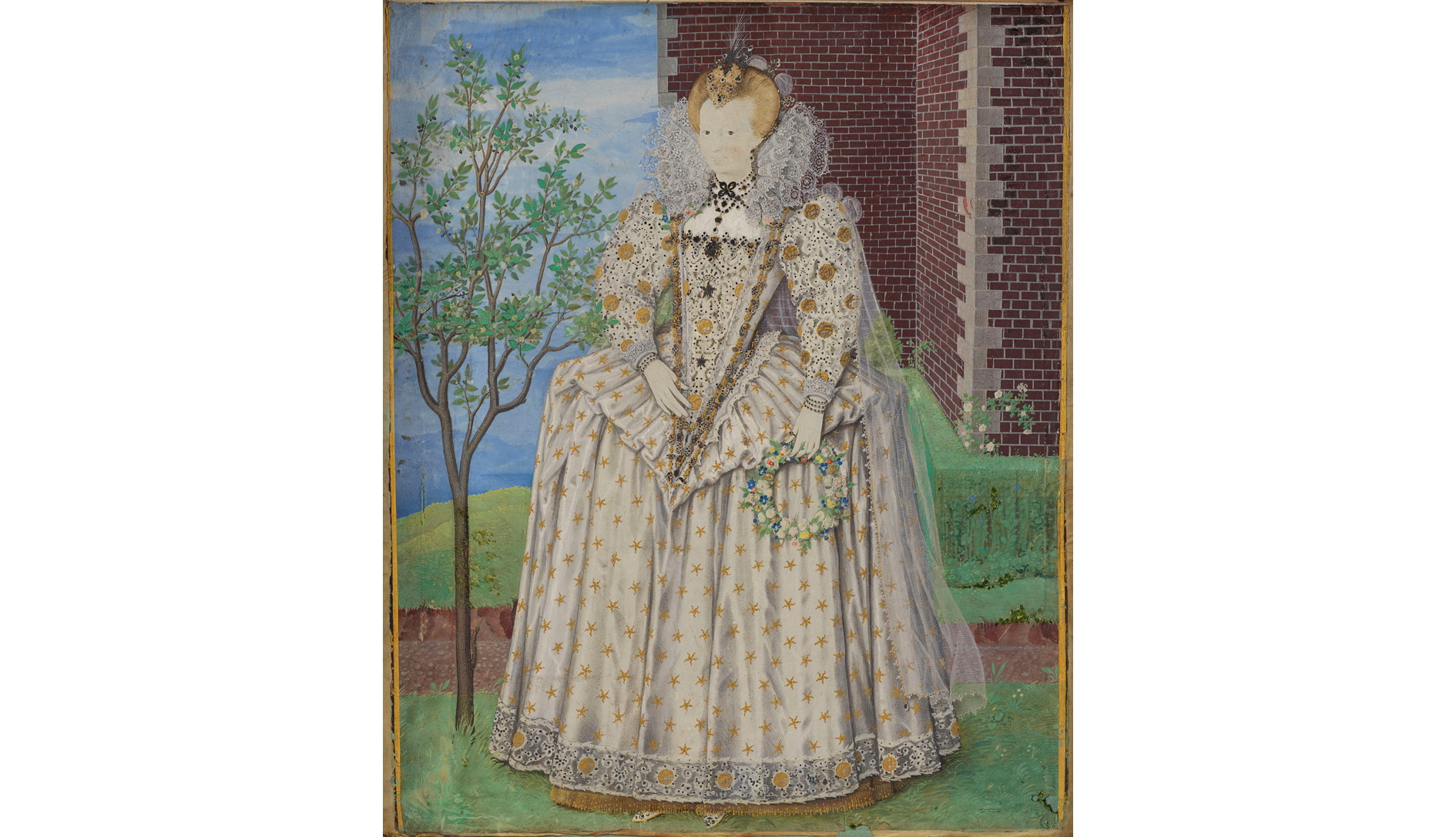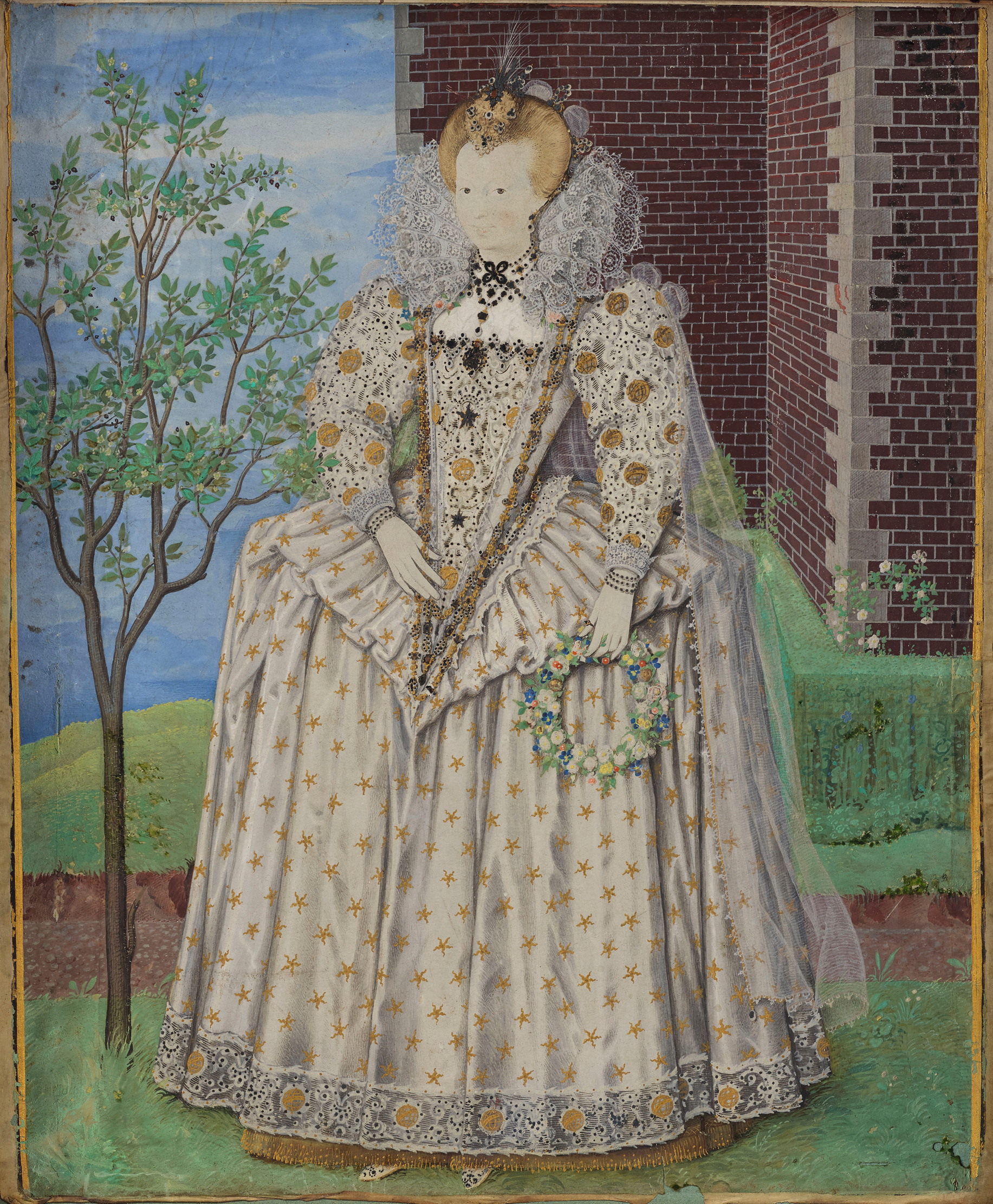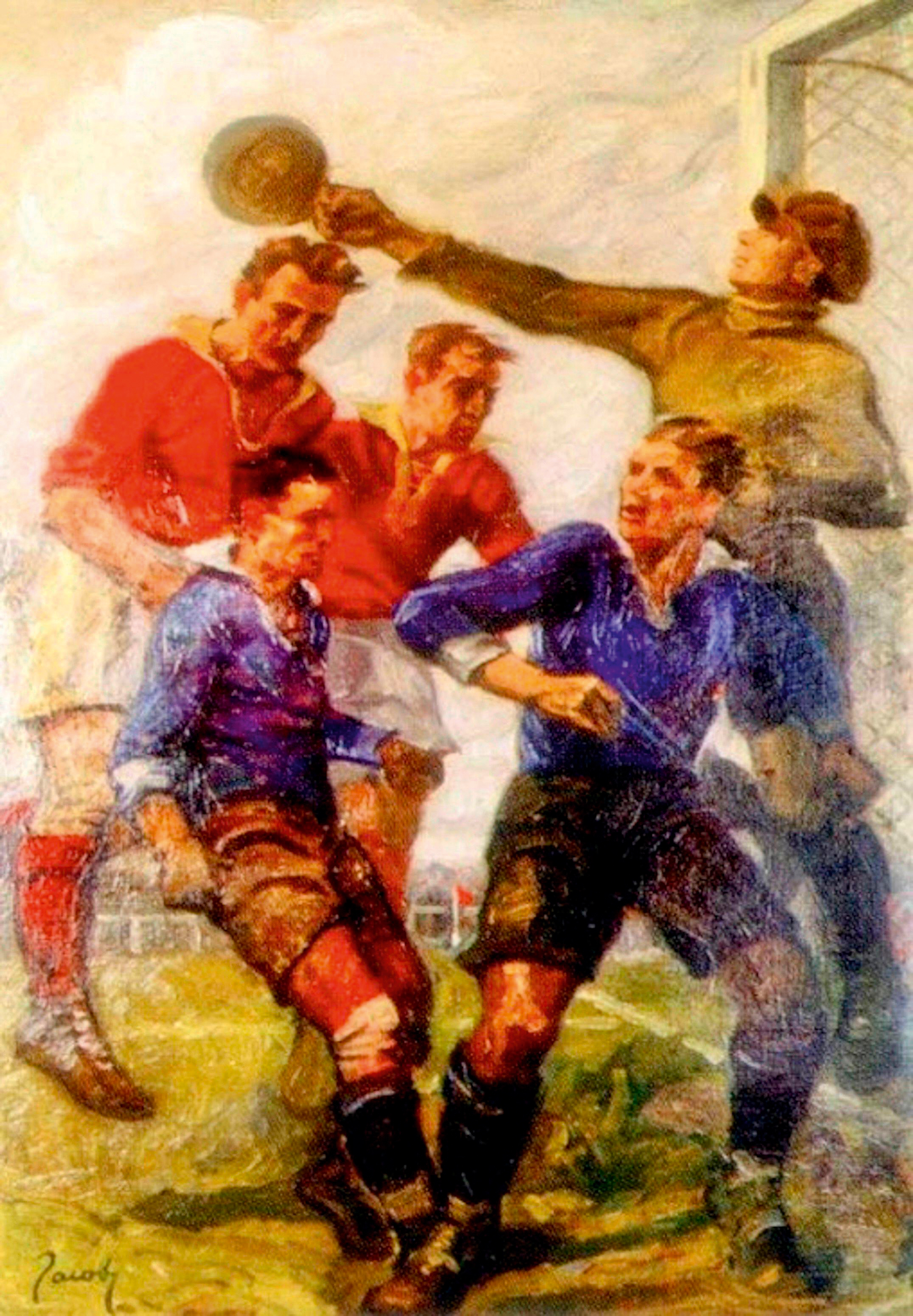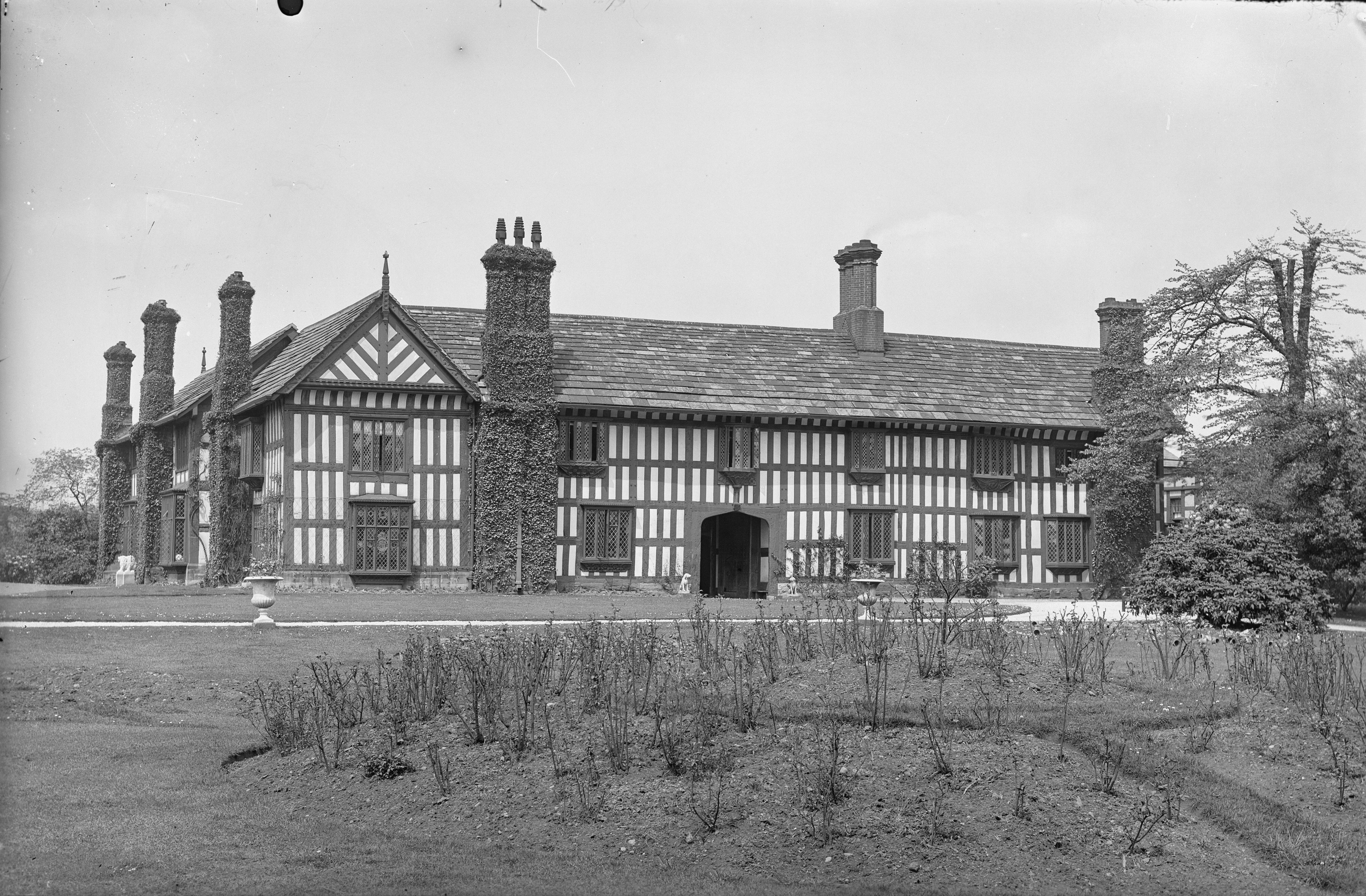'But for a few twists of fate, she might well have been Queen of England': Who was the mystery woman in the Hilliard miniature?
A chance encounter with a cabinet miniature sent two art historians down a rabbit hole of Elizabethan intrigue, spycraft and courtship.


It all started with a chance encounter. A young woman, resplendent in an Elizabethan gown embroidered with stars, her lovely face framed by an exquisite lace ruff, stared out of a cabinet miniature at art historians Elizabeth Goldring and Emma Rutherford. They had come upon the portrait in a private collection and it quickly transpired that it was completely unknown to other specialists. Several clues, from style to materials and technique, pointed to pre-eminent Elizabethan miniaturist Nicholas Hilliard, making this his only known completed cabinet miniature of a female sitter — but who was the mystery woman?
That question spearheaded months of detective work that would plunge Dr Goldring, a Renaissance scholar at the University of Warwick and author of Nicholas Hilliard: Life of an Artist, and Ms Rutherford, director of The Limner Company and a specialist in portrait miniatures, into a 400-year-old political intrigue and the tragic life of an Elizabethan lady.
‘Emma and I embarked on this journey not knowing if we would find anything,’ recalls Dr Goldring. ‘It really was a case of trying to piece together many different clues from a wide range of written documents. We knew we probably needed to look for sources from the early 1590s, because, working from the miniature itself, the costume, everything about the iconography, pointed strongly to [that] date. That helped us to narrow the timeframe we were investigating.’
Soon, they struck gold — well, coins. The accounts of Elizabeth Talbot, Countess of Shrewsbury, better known as Bess of Hardwick, showed that she had paid Hilliard for what seemed to be a cabinet miniature in July 1592. ‘The accounts specified that the payment to Hilliard was for a “greater” picture — which, in Elizabethan English, meant “larger” — and Hilliard’s former apprentice Rowland Lockey was paid at the same time for what seems to have been a copy, but a smaller, or “lesser”, one.’ The miniature Dr Goldring and Ms Rutherford had found rather obviously didn’t portray the formidable Bess — who by 1592 would have been about 70 — but it could well be Lady Arbella Stuart, her granddaughter (and a great-great-granddaughter of Henry VII), whom the Countess had raised.
'Emma and I realised that the payment to Hilliard came at the end of what had been an eight-month visit to the South of England'
Bess, clearly prudent when it came to money, liked to keep minutious details of all her household’s expenditures, down to servants’ tips, which was a stroke of luck, because it allowed Dr Goldring and Ms Rutherford to trace her movements and Arbella’s. ‘Emma and I realised that the payment to Hilliard came at the end of what had been an eight-month visit to the South of England — normally, Bess and Arbella would have been resident in Derbyshire.’
It turned out that the two women had spent a great deal of time at Greenwich Palace in the spring and summer of 1592. ‘That got us thinking: the sitter is shown in a beautiful garden setting, with a very imposing brick building behind.’ Further digging revealed that Bess had tipped Elizabeth I’s gardeners on multiple days in May, June and July and this prompted Dr Goldring and Ms Rutherford to examine Court correspondence: ‘Emma and I found several letters showing that a portrait of Arbella, specifically by Hilliard, had been requested repeatedly in 1591 and early 1592, in connection with a possible marriage between her and the son of the Duke of Parma.’
That is how the two art historians became embroiled in the machinations of Elizabethan foreign policy. ‘It seems that this marriage was something that the Queen — together with William and Robert Cecil, who were running the Elizabethan spy services at this date — saw as a plot to wrongfoot Philip II, by leading him to believe that there might be a dynastic match between Arbella and the Duke of Parma’s son, which potentially would have split Parma away from Catholic Spain to the benefit of Protestant England.’
Exquisite houses, the beauty of Nature, and how to get the most from your life, straight to your inbox.
To be absolutely sure the unsettling news reached the Spanish king, the Elizabethan spymasters sent one of their men to share it with English Catholic exiles in the Low Countries. The plan worked, with Cardinal William Allen duly informing Philip II of the marriage negotiations.

In truth, notes Dr Goldring, these may have been no more than a game of high-stakes brinkmanship: ‘It’s one of history’s great “what ifs”: had push come to shove, would Elizabeth I, would Lord Burghley and his son, Sir Robert Cecil, have agreed to a match between Arbella and the Duke of Parma’s son? I’m not sure that they would have, but they were certainly interested in giving every appearance of being in favour of the match as a means of throwing Philip II off balance. The exchange of miniatures was an integral part of dynastic marriage negotiations.’ A cabinet miniature in particular had the advantage of being small enough to be portable, but ‘big enough to showcase the entire female figure, her wealth and rank, and to hint at her future fecundity’.
That was perhaps the final confirmation that the lady in the Hilliard portrait was, indeed, Arbella, because the miniature, notes Dr Goldring, includes numerous symbols of fertility and rebirth in the form of plants and flowers. ‘All roads kept leading back to Arbella posing for Hilliard in a garden at Greenwich Palace in the summer of 1592.’ Or, as Ms Rutherford put it: ‘This was a dream discovery. Hilliard’s magnificent portrait reflects Arbella’s high status and dynastic importance at the late Elizabethan Court, as well as his own unparalleled skills as an artist.’
That said, the miniature seems not to have been sent to Parma, although the smaller Lockey copy, which is missing, might have been. Whether or not the Duke of Parma’s son was ever a genuine prospect, Arbella never got to marry in 1592, nor in the immediately following years — several later offers for her hand, including one from the then King of Poland Sigismund III Vasa, were rejected.
Instead, as a serious contender for the English throne, she eventually fell foul of her cousin, James I. Many of those who opposed his rule in England, including Sir Walter Raleigh, had plotted to replace him with Arbella. Although James had absolved her at first, when she married in secret without his permission in 1610, Arbella sealed her own fate. Imprisoned for a time in Sir Thomas Parry’s house in Lambeth, she later tried to escape to France, but the King’s ship overtook her own and she was captured. Thrown into the Tower, she starved herself and died on September 25, 1615.
After her death, she was brushed under the carpet of history: ‘It’s hard not to feel rather sad for Arbella,’ says Dr Goldring. ‘In some ways, it was all downhill for her after the moment Hilliard captured so brilliantly in the summer of 1592. Then, the world was her oyster and there was so much possibility, but of course, none of that really came to fruition — it’s very poignant. Emma and I would be absolutely delighted if the discovery of this cabinet miniature brings Arbella back into the limelight. She has been largely forgotten for the past 400 years, which is a shame, given how important she was in her own lifetime — but for a few twists of fate, she might well have been Queen of England.’

Rare guitars played by Prince and Noel Gallagher lead Sotheby's Popular Culture Auction
From August 29, you can bid on rare guitars, a Steinway piano from Abbey Road, art by John Lennon and

The years when Art was part of the Olympics — and the double-gold winning painter who became its greatest champion
For decades in the early 20th century, the Olympic Games included events in art, literature and music. Only one person

The foundry where Barbara Hepworth, Henry Moore and Nic Fiddian-Green cast their bronzes
One of the oldest foundries in the world, Morris Singer in Hampshire has a long and storied past, creating art
Carla must be the only Italian that finds the English weather more congenial than her native country’s sunshine. An antique herself, she became Country Life’s Arts & Antiques editor in 2023 having previously covered, as a freelance journalist, heritage, conservation, history and property stories, for which she won a couple of awards. Her musical taste has never evolved past Puccini and she spends most of her time immersed in any century before the 20th.
-
 The Henry VII-era house that was dismantled piece by piece and shipped to the USA
The Henry VII-era house that was dismantled piece by piece and shipped to the USAAgecroft Hall, near Manchester, didn't meet the same miserable end as some of Britain's other country homes. Instead, it was shipped to the USA and repurposed as a museum.
-
 ‘The best time to plant a tree was 20 years ago; the second best time is now'
‘The best time to plant a tree was 20 years ago; the second best time is now'Now is the time to firstly, hug a tree, and secondly, plant some more — in increasingly imaginative ways.
